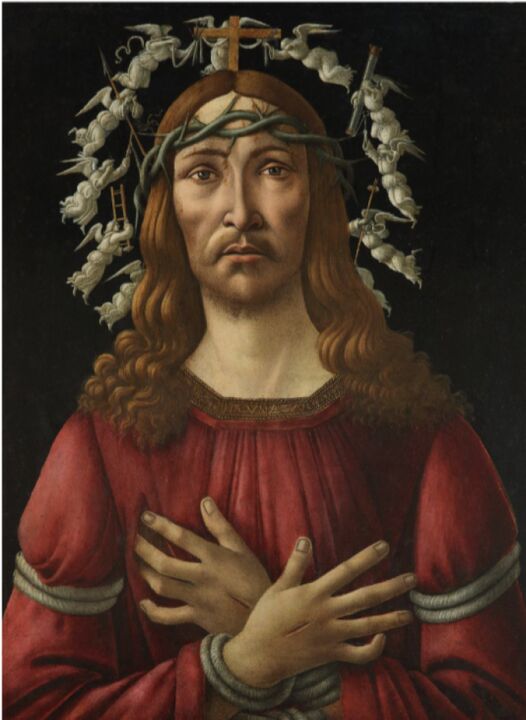 Sandro Botticelli "The man of sorrows"
Sandro Botticelli "The man of sorrows"
The work "Man of Sorrows" by renowned Italian artist Sandro Botticelli, dated approximately 1500, has been hidden from public view for hundreds of years — apparently due to its own secret. Since the nineteenth century, the painting has been in private hands, preventing it from being closely examined by experts. The artwork is now scheduled to be auctioned at Sotheby's on 2022 Jan. 27 with a guaranteed minimum price of $40 million. And one pundit has already discovered a secret hidden within its strokes.
While spending time with the work recently, Chris Apostle, Sotheby's senior vice president and director of Old Master paintings, noticed something strange: the beginning of a composition depicting the Madonna cradling the infant Christ's head in her arms. Details of this "Madonna of tenderness" become especially visible when rotated upside down and viewed in infrared.
Unknown aspects of a painting, referred to as a "under-drawing," are not uncommon, Apostle stated. At the time, the panel on which he painted would have been prohibitively expensive. "Panel was a valuable commodity during the Renaissance," he explained, "so it makes sense that Botticelli would not want to discard the canvas simply because he had abandoned drawing the initial motif." Rather than that, Botticelli appears to have simply turned the panel and created the current magnificent work on it. And, while the parallel is unlikely to have been deliberate, the painting's dark connotations do lend credence to the notion that some works are perhaps intended to be abandoned. "I believe there is something about this image that Botticelli is projecting, a recognition that we are all going to die — it carries a profound emotional charge," Apostle said of his interpretation of the work, which Botticelli would have painted near the end of his life. "Had he depicted Christ directly and rigidly, this would have been more akin to an icon; a little more impenetrable."


 Jean Dubreil
Jean Dubreil





